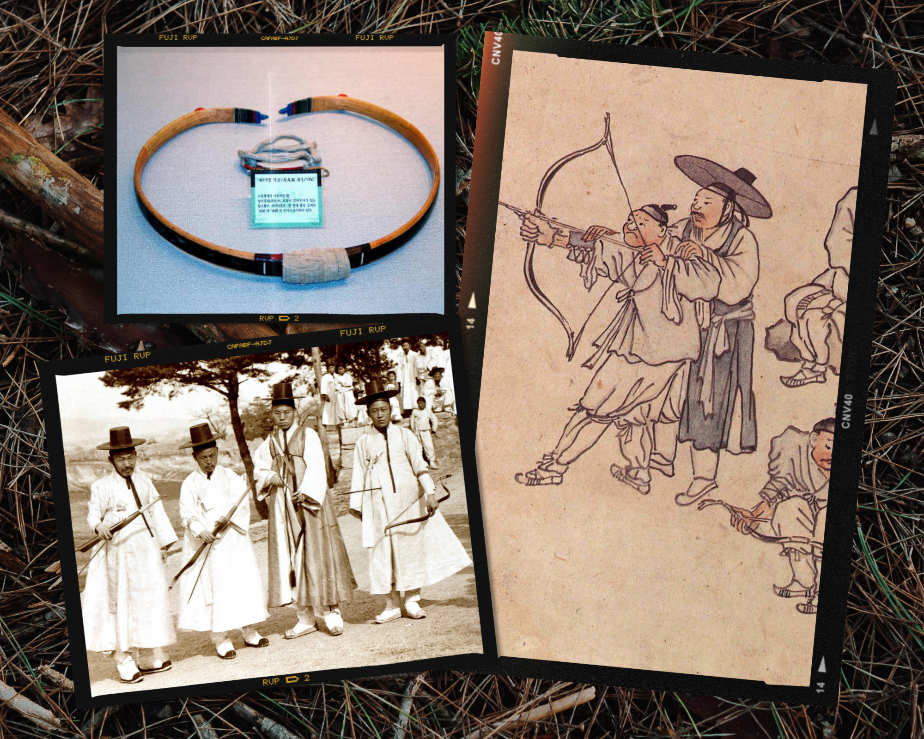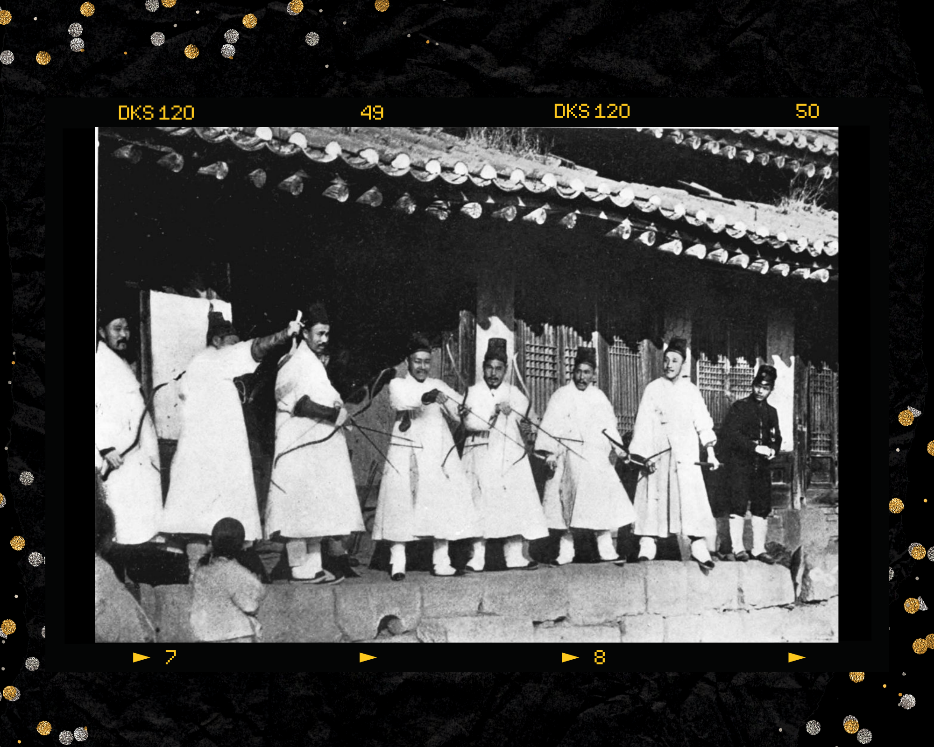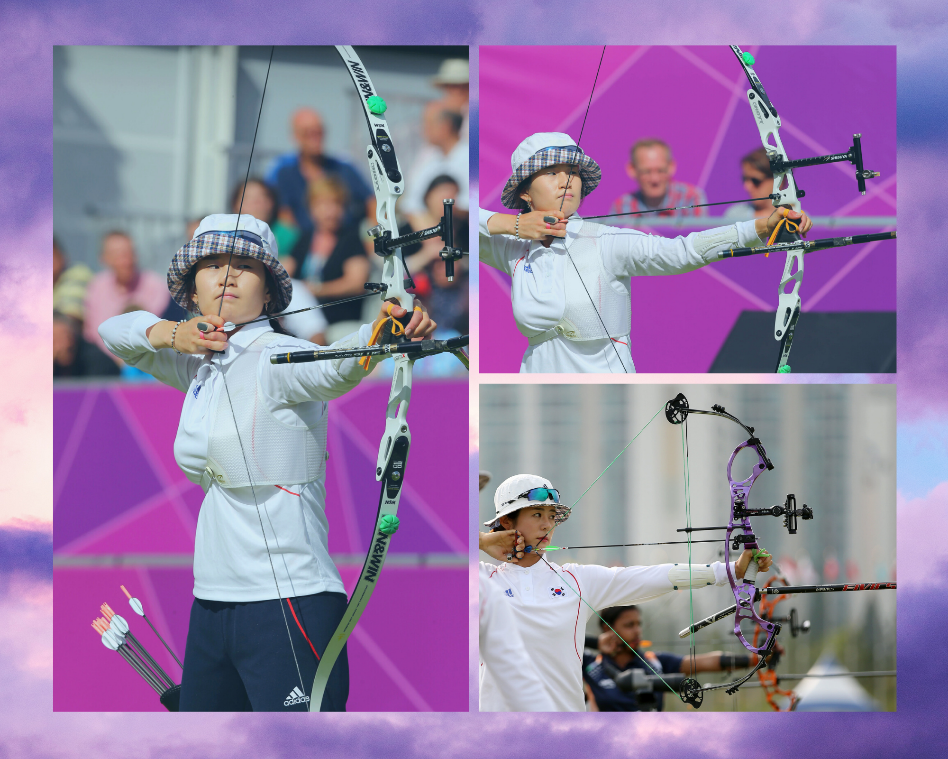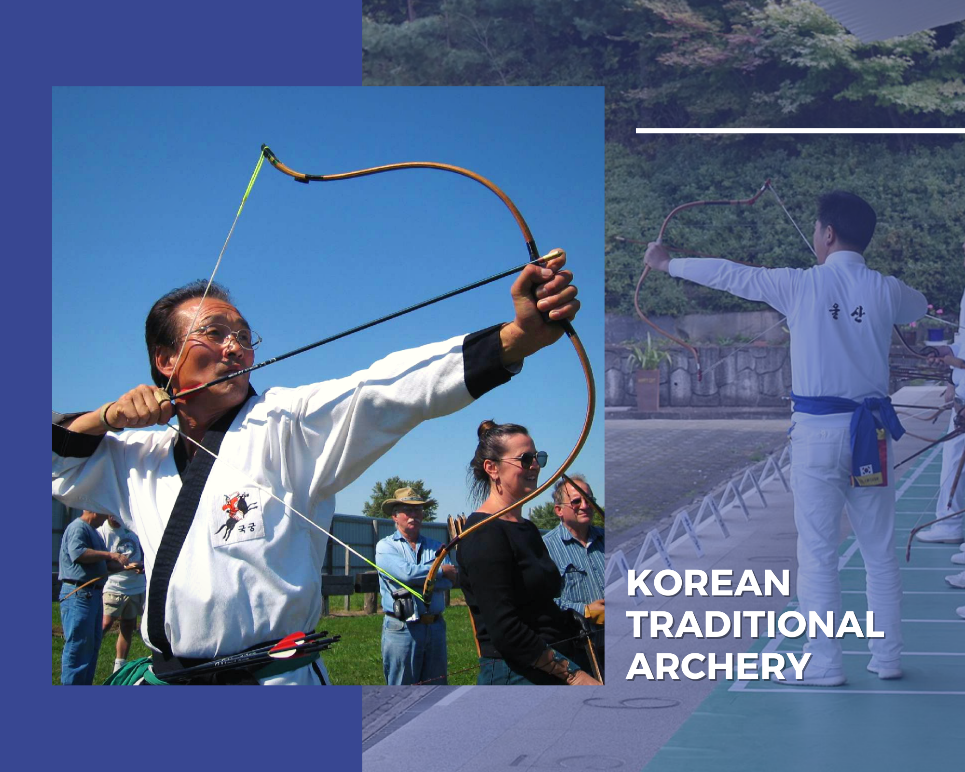- 한국어
- English
- 日本語
- 中文
- العربية
- Español
- Français
- Deutsch
- Pусский
- Tiếng Việt
- Indonesian
By Honorary Reporter Laura Lopez Velazquez from Mexico
Photo = Wikimedia Commons, Laura Lopez Velazquez
Archery, called gungdo or gungsul in Korean, is a leading martial art in Korea. Records of archery culture are depicted in murals of the ancient Goguryeo Kingdom and documents on archery date back to the Goryeo and Joseon dynasties. Thus archery has a rich and long history in the country.

(Clockwise) A Korean bow that has not been strung (Historiographer), a popular archery painting (Kim Hong-do) and winners of an archery contest in 1903 (Okinawa Soba)
Types of bows
Depending on the materials used, bows are classified as simple and compound. Those in the first category are made of a single material such as wood or bamboo. Compound bows are made by mixing a variety of materials. Bow production depends on the maker and availability of the materials.
Compound bows are further divided into recurved or reflex. The Korean bow is a reflex or antler bow. Its length ranges from 20-30 cm to 1 m, and the materials used to make it include water buffalo horn, cow tendon, mulberry and oak bark, bamboo and white birch bark. Compared to the Chinese bow, the Korean one is smaller and has a more pronounced curvature, with a strong elasticity and deformation power that gives it greater range.
Other types of bows used during the Joseon Dynasty were chongryanggung (strong bow), similar to the traditional antler bow and used to shoot heavy arrows. Yegung (ceremonial bow), the longest among Korean bows, was exclusively used at ceremonies and rituals. Mokgung (wooden bow) was mostly made from mulberry wood. Cholgung (iron bow) had the shape of a traditional compound bow and donggaehwal is a type of small cavalry bow carried on horseback.
Types of Arrows
Korean arrows were generally made of wood, bamboo and pheasant feathers. Those widely used during the Joseon era were mokjon, a wooden military arrow, and choljon, which was made of iron with three subtypes according to weight.
Yejon was used in ceremonies; pyonjon was a small arrow; saejon was a thin and short arrow made with thin bamboo fragments and used to send requests to the enemy; and yuyeopjon was made of willow leaf.

An archery tournament in Korea in the 1900s
Joseon era
The traditions and characteristics of Korean archery were mostly documented in the Joseon era, thus the archery traditions practiced during this period and the essential components that helped its preservation are well recorded.
Combat archery
Combat archery, also known as musa, was developed at the end of the 16th century following Japan's repeated invasions of the Korean Peninsula. This caused military institutions to improve archery for combat and make it part of military service exams.
Ceremonial archery
Koreans used their bows effectively during times of war but Confucianism and Buddhism, two dominant schools of thought on the peninsula, discouraged the bow's use as a combat weapon. So over time, archery acquired another purpose. One was ceremonial archery, or yesa, done at archery-related celebrations or rituals. Yesa had strict rules and was accompanied by music, serving as entertainment. The rituals were held under the objective of cultivating the mind and preserving social order under Confucian values.
Sajong
The literal meaning of sajong is "a space or room to practice archery." What the term refers to, however, is a club of archers. The meaning and function of sajong were essential to preserve archery traditions, and such clubs later emerged as educational and military organizations. The number of sajong increased after the Japanese invasions and they carried on the tradition of archery for civil and military purposes.

Korea is a global archery power as shown by the dozens of Olympic medals it has won over the decades. (Korean Culture and Information Service)
Importance
The art of building traditional bows and arrows was designated a National Intangible Cultural Property in 1971 under the name gungsijang. Due to manufacturing techniques passed down over generations, this craft is important in the history of traditional martial arts in Korea. On July 30 last year, the act of using bows and arrows to shoot a target was designated National Intangible Cultural Property No. 142 under the name hwalssogyi referring to the shooting of arrows, rules and the necessary environment to do so.
Over time, the philosophy and teaching of traditional archery were standardized and transferred to Olympic archery, a sport in which Korean athletes have dominated thanks to archery's long history and tradition in Korea. To this day, archery clubs continue to maintain this tradition, both martial and ritual.

Grandmaster Heon K. Kim is head of the World Kuk Gung (Traditional Korean Archery) Federation
enny0611@korea.kr
*This article is written by a Korea.net Honorary Reporter. Our group of Honorary Reporters are from all around the world, and they share with Korea.net their love and passion for all things Korean.